A floating airport is an airport built and situated on a very large floating structure (VLFS) located many miles out at sea utilizing a flotation type of device or devices such as pneumatic stabilized platform (PSP) technology. Floating Kansai International Airport (KIX) is the world’s first ocean airport, built on a landfill island in Osaka Bay, Japan.
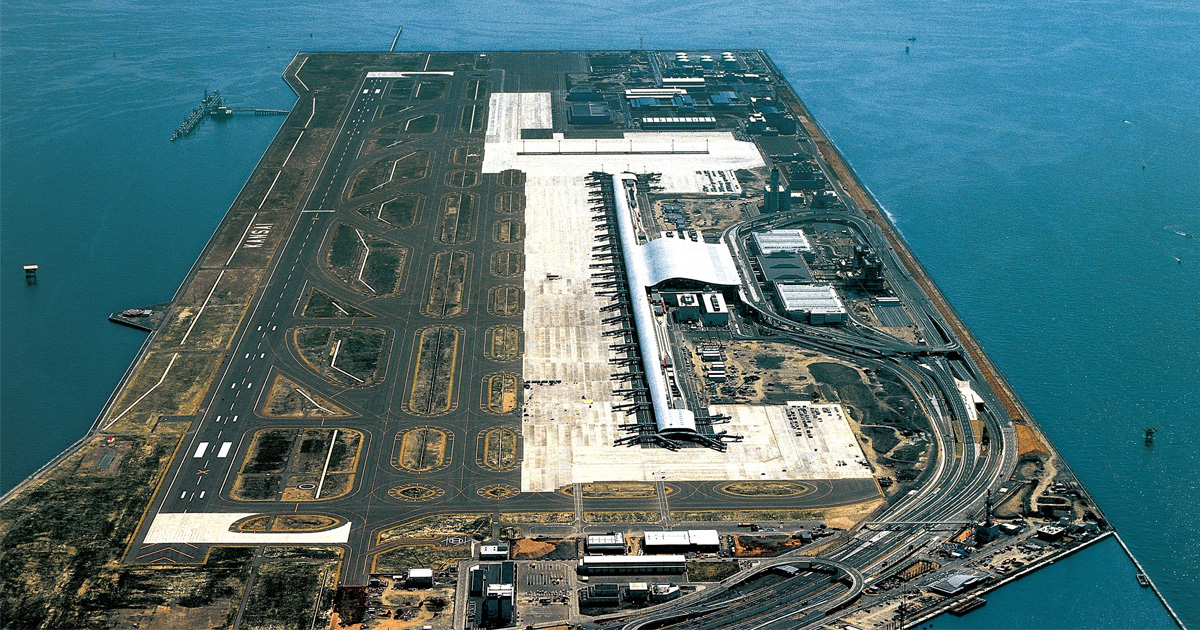
Opened in 1994, Floating Kansai International Airport was a modern engineering marvel, built entirely as an artificial island
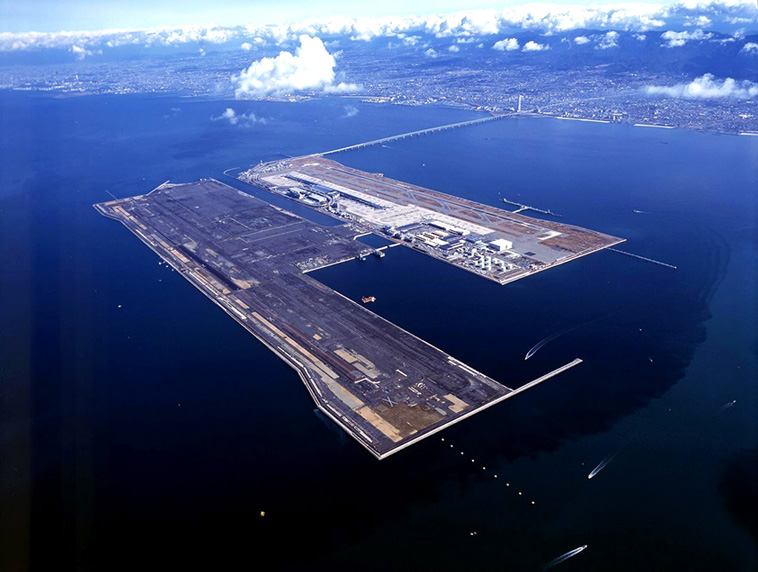
Opened in 1994, KIX was a modern engineering marvel, built entirely as an artificial island. Because the site is built upon compacted fill, it suffers from subsidence, sinking 2-4 centimeters per year. The Kansai terminal is 1.7 kilometers long and was designed by world-famous architect Renzo Piano. KIX is linked to the mainland by a 3.7-kilometer bridge and provides air service for the nearby cities of Osaka, Kobe, and Kyoto.
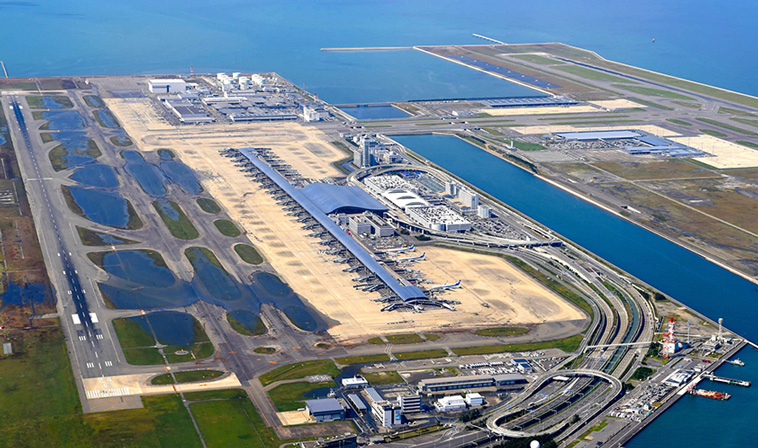
Image Credit: Asahi Shimbun
Construction started in 1987. The sea wall was finished in 1989 (made of rock and 48,000 tetrapods). Three mountains were excavated for 21 million cubic meters (27 million cubic yards), and 180 million cubic meters (240 million cubic yards) were used to construct the island. Over three years, 10,000 workers using 80 ships took 10 million man-hours to complete the 30-or-40-meter (100 or 130 ft) layer of earth over the sea floor and inside the sea wall. In 1990, a three-kilometre (1.9 mi) bridge was completed to connect the island to the mainland at Rinku Town, at a cost of $1 billion.
The airport suffers from subsidence, sinking 2-4 centimeters per year
Since it opened in 1994, Kansai has sunk 38 feet. Kansai’s islands were predicted to evenly settle, or as engineers say, subside, over a 50-year period before stabilizing at 13 feet above sea level. That’s the minimum elevation required to prevent flooding in case a breach develops in an encircling seawall. Portions of the first of the two islands created reached that threshold within six years. At least $150 million was spent to raise the seawall, but some engineers predict that by 2056, sections of the two artificial islands may sink 13 more feet—to sea level.

When Kansai opened in 1994, its cost was estimated at $8 billion, but then repairs and modifications had swelled the figure to $20 billion
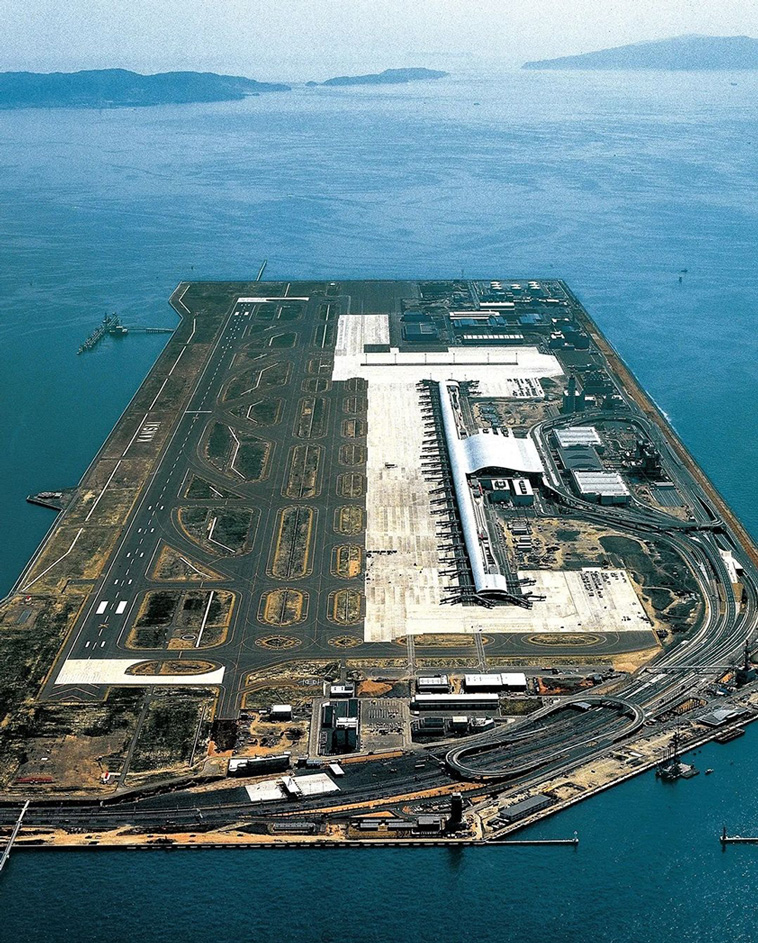
Image Credit: Shinkenchiku Sha
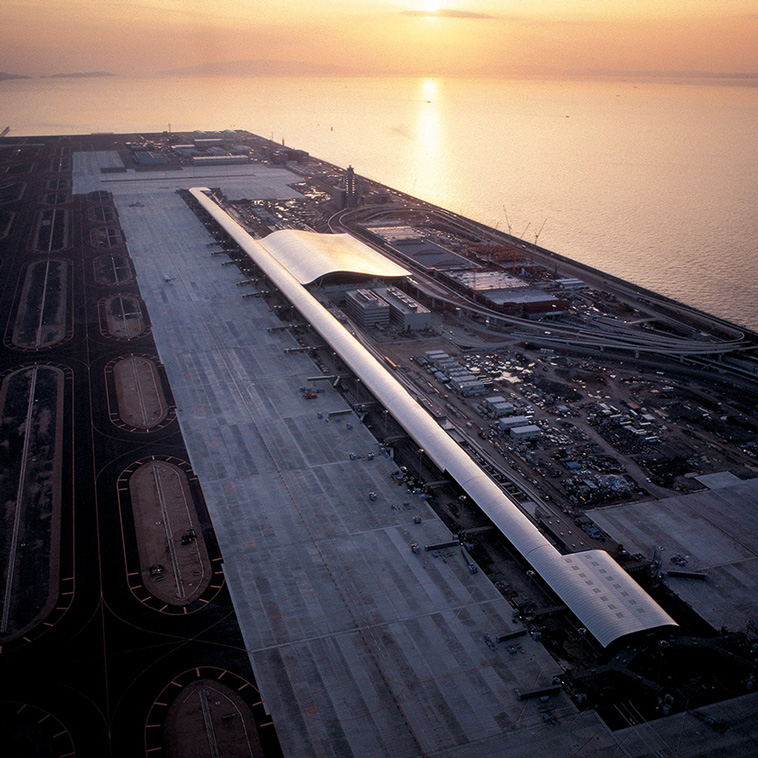
Image Credit: Shunji Ishida
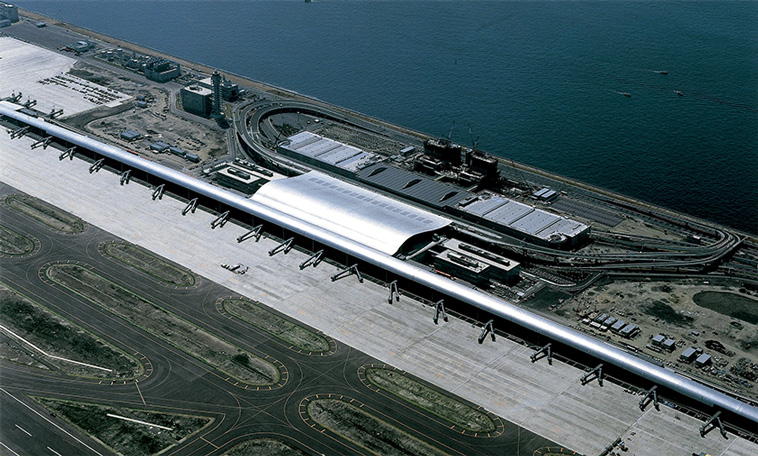
Image Credit: Shinkenchiku Sha
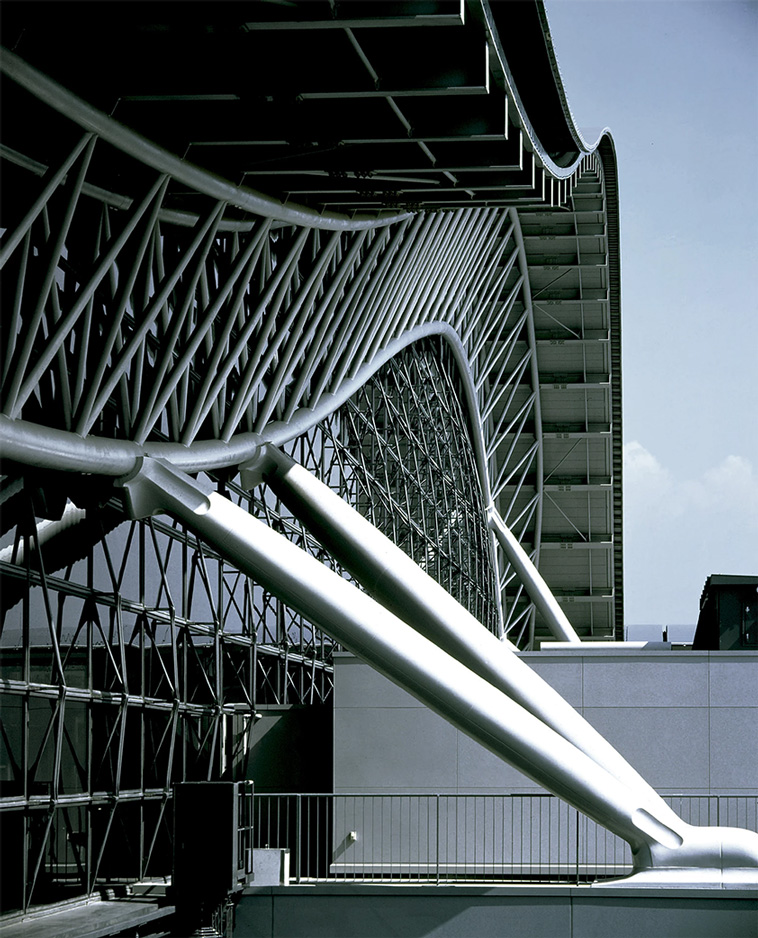
Image Credit: Dennis Gilbert

Image Credit: Dennis Gilbert
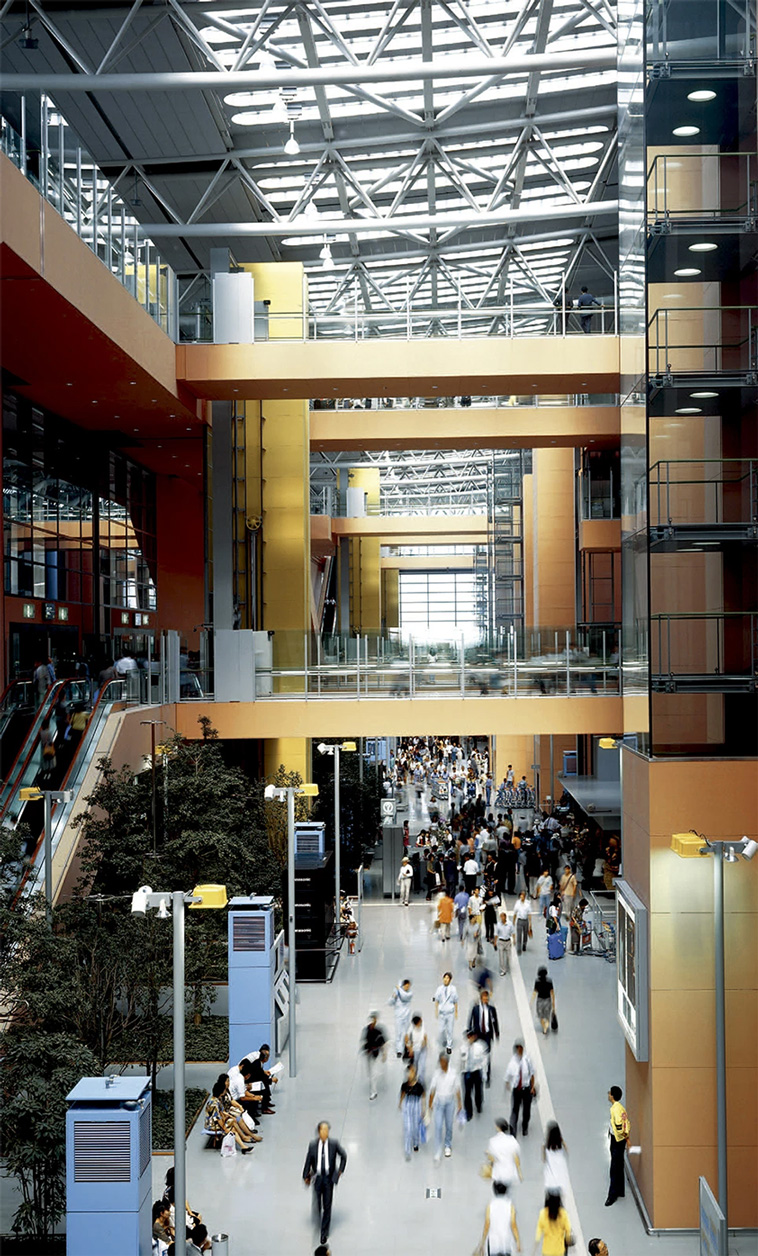
Image Credit: Dennis Gilbert

